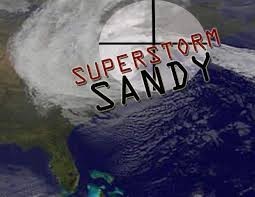Brooklyn/Staten Island Congressman Dan Donovan, alongside state and local officials for Brooklyn and Staten Island, recently sent a letter to Federal Emergency Management (FEMA) Administrator Craig Fugate urging the agency to comply with The Homeowner Flood Insurance Affordability Act.
This act required FEMA to provide more flood mitigation options to homeowners by March 2015 in the hopes of reducing risk and flood insurance premiums. Currently, the only mitigation option available to homeowners is elevation, a costly and technically difficult option that leads to high flood insurance premium reductions.

“It is a cruel irony that federal policy awards billions of dollars in post-disaster assistance, but discourages actions that can reduce loss from future storms,” said Congressman Donovan. “While FEMA dithers, homes continue to face high risk from flood damage because no insurance guidelines have been issued for alternatives to elevation.”
Brooklyn Borough President Eric L. Adams addressed Brooklyn’s concerns saying, “FEMA’s mismanagement continues to hurt homeowners in Brooklyn, compounding the damage that Superstorm Sandy left in its wake across our borough. Despite the clear and undeniable fact that a range of flood mitigation options exist to help reduce burdensome insurance premiums, there has been an inexcusable lack of action to outline those options to the public. On behalf of long-suffering Brooklynites, I stand with a bipartisan delegation of New York City’s lawmakers to demand accountability for FEMA’s inability to comply with federally-mandated deadlines.”

Coney Island State Senator Diane J. Savino called FEMA’s inaction “a disgrace” and highlighted the importance of her constituents being prepared for the next possible storm. “We cannot allow homeowners to continue to wait in limbo with no alternative options, especially when this is an ongoing concern. We want our constituents to not only be properly prepared in the event of another storm but adequately insured as well,” said Savino.
A portion of the letter reads, “Approximately 80 percent of homes in the City’s high risk flood zone were constructed before 1983, when FEMA’s Flood Insurance Rate Maps (FIRMs) triggered stricter building codes for new structures in the floodplain. It was no surprise that those “pre-FIRM” homes sustained the worst damage during the storm, and are now most in need of mitigation to prevent damage from future floods.”

Council Member Mark Treyger, who represents the south Brooklyn waterside neighborhoods of Bensonhurst, Brighton Beach, Coney Island, and Gravesend, expressed his concern for the borough.
“New Yorkers who are still struggling to rebuild their homes and lives nearly three years after Sandy deserve to at least know all of their options to protect their property and reduce their substantial flood insurance premiums. FEMA must be much more responsible in light of the incredible strain this inaction is causing for thousands of residents who remain at risk of flood damage. I applaud Rep. Donovan and my colleagues for pushing FEMA to immediately rectify this situation and allow storm victims to finally move forward with vital resiliency measures,” said Treyger, who is also Chair of the Council Committee on Recovery & Resiliency.
This letter isn’t the first attempt to contact FEMA. New York City released a resiliency report in June 2013, entitled A Stronger, More Resilient New York, in which it called on FEMA to develop further mitigation options for resiliency measures.
Council Member Vincent Gentile said, “It is unfathomable to me that, as we enter the peak of hurricane season, FEMA has yet to issue alternative flood mitigation guidelines for residents living in prone areas. FEMA was required by Congress to issue new guidelines a year following the law’s enactment, in March 2014. We are currently six months past the due date and still, nearly three years after Sandy, affected residents aren’t receiving the help and resources they need from our government.”






